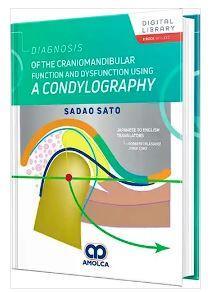Amolca
Diagnosis of the Craniomandibular Function and Dysfunction Using a Condylography (E-Book Included)
Diagnosis of the Craniomandibular Function and Dysfunction Using a Condylography (E-Book Included)
Couldn't load pickup availability
(E-Book Included)
Author: Sadao Sato
Year: 2024
Pages: 207
Hardcover
Publisher: Amolca
ISBN: 9786287681507
DESCRIPTION:
Various social and dietary changes have gradually transformed the work of dentists, who now primarily focus on the treatment of dental caries and periodontal disease. This shift has particularly impacted orthodontists, who have increasingly recognized the importance of dental alignment treatments in conjunction with occlusion therapies. Aware of the growing need to address temporomandibular occlusion, Dr. Sadao Sato, a professor at Kanagawa Dental University in Japan, has authored this work to review everything related to the diagnosis and treatment of malocclusion through the use of condylography. In twenty chapters, supported by more than 500 images, Dr. Sato explains the structure and function of the cranio-mandibular system, mandibular positioning, the factors contributing to malocclusion, the risk factors of human malocclusion, condylography as a tool for functional analysis, the procedure for performing condylography, analysis tools, the disorders and symptoms of temporomandibular joint issues, the significance of the lateral displacement of the mandibular condyle, and presents a series of cases where temporomandibular joint disorders are evaluated and treated. Dentists in general, and orthodontists in particular, will find in this work a comprehensive guide to help evaluate temporomandibular disorders and, at the same time, define the optimal treatment for their patients.
Contents:
Section I: Theory
Chapter 1. History of Research on Occlusion and Mandibular Movement
Chapter 2. Structure and Function of the Cranio-Mandibular System
Chapter 3. Concept of Mandibular Position — Clinically Required Mandibular Position
Chapter 4. Factors of Malocclusion and the Temporomandibular Joint
Chapter 5. Malocclusion and Temporomandibular Joint (TMJ) Disorders
Chapter 6. Malocclusion and Temporomandibular Joint Disorders
Section II: Practice
Chapter 7. Condylography as a Functional Analysis of the Temporomandibular Joint
Chapter 8. Recording Mandibular Condyle Movement Through Condylography
Chapter 9. Hinge Axis and Standardization of Mandibular Condyle Movement Recording
Section III: Diagnosis
Chapter 10. Basic Evaluation of Condylographic Tracing
Chapter 11. Analysis of Movement Patterns: Analytical Tools
Chapter 12. Analysis of Functional Mandibular Movement Patterns
Chapter 13. Joint Laxity
Chapter 14. Progression of Temporomandibular Joint Disorders and Joint Symptoms
Chapter 15. Importance of Lateral Displacement of the Mandibular Condyle
Chapter 16. Diagnostic Importance of Mandibular Condyle Movement on the Working Side During Asymmetric Movements
Section IV: Case Studies
Chapter 17. Case 1
Chapter 18. Case 2
Chapter 19. Case 3
Chapter 20. Case 4
Appendix. Explanation of Terms Related to Condylography
View Preface, Table of Contents, and Chapter 16: Click here
Table of Contents: Summary
Section I: Theory
- Chapter 1. History of Occlusion and Mandibular Movement Research
- Chapter 2. Structure and Function of the Cranio-mandibular System
- Chapter 3. Concept of Mandibular Position - Clinically Required Mandibular Position
- Chapter 4. Factors of malocclusion and the temporomandibular joint
- Chapter 5. Malocclusion and Temporomandibular Joint Disorders (1) Risk Factors for Human Temporomandibular Joint
- Chapter 6. Malocclusion and Temporomandibular Joint Disorders (2) Risk Factors Derived from Occlusion
Section II: Practice
- Chapter 7. Condylography as a functional analysis of the temporomandibular joint.
- Chapter 8. Recording of mandibular condyle movement by condylography
- Chapter 9. Hinge Axis and Standardization of Movement Recording
Section III: Diagnosis
- Chapter 10. Essential Evaluation of Condylographic Tracing
- Chapter 11. Analysis of movement patterns - Tools for analysis
- Chapter 12. Analysis of mandibular functional movement patterns
- Chapter 13. Joint Loosening
- Chapter 14. Progression of temporomandibular joint disorders and joint symptoms
- Chapter 15. Importance of side shift of mandibular condyle
- Chapter 16. Diagnostic significance of working side mandibular condyle movement in asymmetric movement
Section IV: Case Studies
- Chapter 17. Case 1. Early treatment of severe growing retrognathic mandibula with dysfunction cranio-mandibular system.
- Chapter 18. Case 2. A case of acute closed-lock due to loss of occlusal support
- Chapter 19. Case 3. Prevention of occlusal collapse and occlusal treatment based on bruxism
- Chapter 20. Case 4. Step-by-step evaluation and occlusal treatment of a case with complex functional disorder
Appendix. Explanation of terms related to condylography
International Organizations/Institutions:
- American Academy of Orofacial Pain: https://www.aaop.org/
- International Association for Dental Research: https://www.iadr.org/
- European Academy of Craniomandibular Disorders:
keywords:
Craniomandibular function, condylography, malocclusion diagnosis, temporomandibular joint, TMJ disorders, orthodontic treatment, mandibular movement analysis, dental alignment, cranio-mandibular system, TMJ treatment
Target audience:
Dentists, Orthodontists, Dental students, TMJ specialists, Craniofacial surgeons, Dental professionals, Oral and maxillofacial surgeons, University libraries, Dental clinics, Medical research institutes
Genre:
Medical, Dentistry, Orthodontics, Professional reference, TMJ studies, Clinical guide, Non-fiction, Medical textbooks, Oral health, Diagnostic tools


